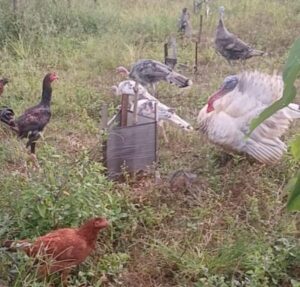Free Running Chicken and Poults
The Significance of Poultry Farming at Jessie’s Sunshine Farm
At Jessie’s Sunshine Farm, the cultivation of chickens, turkeys, and ducks is a practice of significant importance, contributing substantially to the farm’s operational and experiential dimensions. This undertaking serves as a cornerstone for both the provision of essential sustenance and the enrichment of the farm environment. Here are our front-runners of the population.
Benefits of Poultry Farming
The advantages derived from raising poultry at Jessie’s Sunshine Farm are multifaceted, encompassing nutritional, environmental, and experiential benefits.
Nutritional Value
Poultry, specifically chickens and ducks, are primary producers of eggs, a resource rich in protein and essential nutrients. These eggs are a valuable component of the farm’s nutritional output. Furthermore, turkeys and ducks provide high-quality meat, which is another critical source of protein, thereby enhancing the farm’s ability to supply nutritious food.
Sustainable Practices
The practice of raising poultry supports sustainable farming methods. These birds naturally contribute to pest management and soil health. Their foraging behaviors assist in controlling unwanted insects and weeds, while their manure serves as a natural fertilizer, enriching the soil.
Natural Enjoyment
The presence of chickens, turkeys, and ducks at Jessie’s Sunshine Farm enhances the overall environment. These animals bring a sense of joy and a tangible connection to nature for both the farm’s inhabitants and visitors.
Care Requirements
To ensure the well-being and productivity of the poultry, adherence to specific care protocols is essential.
Food
A balanced diet is a fundamental requirement. Chickens and ducks require a combination of grains, proteins, and greens to maintain optimal health and productivity. The precise composition of their diet is carefully managed to meet their nutritional needs.
Vaccines
Regular vaccinations are a necessary measure to protect the flock from diseases and maintain their health. A proactive vaccination schedule is implemented to safeguard the poultry against common illnesses. We thank the barangay for their essential contribution to that issue.
Brooder Management
For young chicks and ducklings, a brooder is provided to create a warm and secure environment, crucial for their early development. This controlled environment is essential to ensure the survival and healthy growth of the young birds.
Broad Breasted White Turkey
A Poultry Powerhouse
If you’re a fan of turkey (and who isn’t, especially around the holidays?), you’ve probably heard of the Broad Breasted White turkey. This breed is the superstar of the turkey world, dominating the commercial market for good reason!
What Makes them Special?
- Size and Weight: These birds are hefty, with adults weighing between 17 to 18 kg. That’s a lot of turkey for your table!
- Breeding: They have shorter breast bones and larger breasts, which is great for meat production but means they often need a little help from humans to breed.
- Growth Rate: Broad Breasted Whites are known for their impressive growth rates, reaching processing size in about 16 weeks. Talk about a quick turnaround!
Why Choose Broad Breasted Whites?
Commercially Popular: They’re the most widely used breed for meat production, so you know they’re tried and true.
High Meat Yield: If you’re looking for a turkey that delivers, this breed is your best bet. They provide a lot of meat, making them perfect for big family feasts.
The oldest of all, PAPADOU
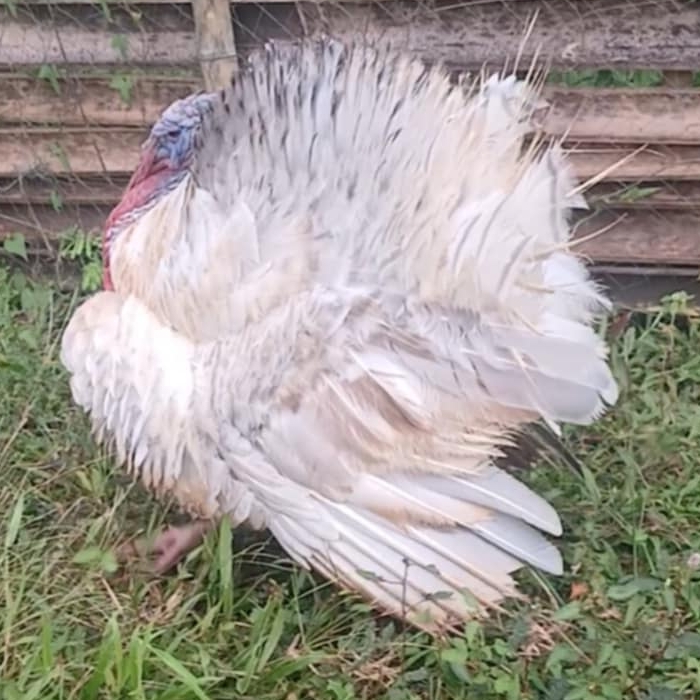
Royal Palm Turkey
A Turkey Gem
The Royal Palm turkey is a distinctive breed of domestic turkey, primarily recognized for its ornamental value rather than meat production. This breed is characterized by its striking appearance, featuring a predominantly white plumage adorned with bands of metallic black, which creates a visually appealing contrast.
Key Characteristics
- Scientific Name: Meleagris gallopavo f. domestica
- Origin: United States
- Weight:
- Males: 7.3 – 10 kg
- Females: 4.5 – 5.4 kg
The Royal Palm turkey is classified as a heritage breed, having been recognized by the American Standard of Perfection in 1977. It is slightly smaller than other heritage turkeys, making it suitable for various homesteading environments. Known for its hardiness and self-sufficiency, this breed is often favored by poultry enthusiasts and those seeking to maintain traditional livestock varieties.
This is Marie Antoinette, because she had lost 21 of her 27 children. Not to the guillotine, but to mismanagement.

Cobra Chicken
Fighting Cock of the Philippines
The Cobra Chicken, also known as the fighting cock, holds a significant place in Philippine culture, particularly in the realm of traditional cockfighting. This breed is renowned for its bravery and resilience, often characterized by its ability to confront and kill venomous snakes, thereby protecting its young.
Characteristics
- Physical Attributes: The Cobra Chicken typically exhibits a robust physique, with strong legs and a prominent comb.
- Temperament: Known for its aggressive nature, this breed is often trained for competitive fighting, showcasing remarkable agility and strength.
Care and Management
Proper care for Cobra Chickens involves:
- Nutrition: A balanced diet rich in protein to support their vigorous lifestyle.
- Housing: Adequate shelter that provides safety from predators and harsh weather conditions.
- Training: Regular training sessions to enhance their fighting skills and physical conditioning.
This is Henry The Runner.

Kabir Chicken
Origin of the Kabir
- Kabir Chicken originated in the Middle East, where it is desired due to its very large size. Kabir means “large” in Arabic. Kabir chicken are very smart Chicken due to the fact that they can read the Qur’an at full moon. They have been distributed throughout the world, gaining a lot of popularity.
What are the advantages of raising Kabir Chicken?
- It is superior for meat conversion because of its rapid growth, good body conformation and efficient feed conversion.
- The chicken is resistant to disease and heat stress.
- It is large in size and has a “native” taste and texture.
What are the reproductive characteristics of Kabir Chicken?
- When cross-breed with native chickens, the Kabir qualities are retained in the new breed.
- Feeding cost is low since Kabir chicken can also survive by themselves. They can be raised in the same manner as “native chickens ”.
- Kabir eggs are low in cholesterol.
- One male Kabir is capable of breeding with 15 to 20 female Kabir.
- Normally, Kabir chicken begins laying after 26 weeks or 6 ½ months.
- Kabir layer can lay 200 eggs/year.
- Kabir does natural brooding although may be late, thus should be encouraged to brood.
What is the socio-economic impact of Kabir chicken raising?
Kabir chicken raising is a very good livelihood opportunity to families that desire to have an additional income, and a source of “native style” meat and exceptionally nutritious and low cholesterol table eggs. Also, Kabir chickens’ large size and handsome appearance make them a source of pride, especially among the rural folks.
This is Muhammad, our Prophet Rooster
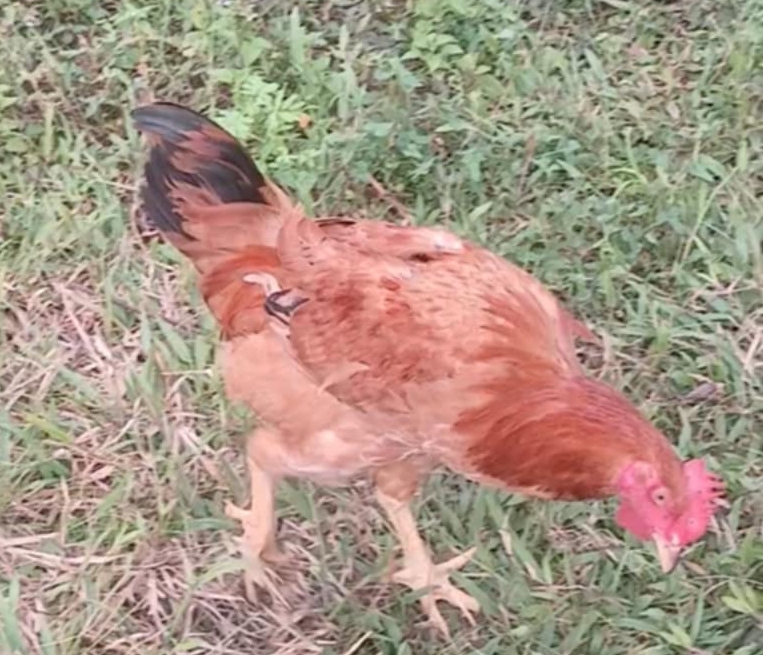
Weight of Kabir
- Male Kabir chickens: Studies show males can weigh around 2-3 kg .
- Female Kabir chickens: Studies indicate females can weigh around 1-2 kg .
- Marketable weight: Some studies suggest Kabir chickens can reach a marketable weight of 2,000 grams by 3 months of age, food permitting.
What are the requirements of raising Kabir Chicken?
0-3 week @ 20 head per sq/meter
4-6 week @ 10 head per sq/meter
6 above @ 5 head per sq/meter
How much water does a Kabir consumes per day?
1 liter / day.
Rode Island Chicken
History of the RED
The Rhode Island Red was first seen in 1854 Rhode Island and Massachusetts. A sea captain, William Tripp, bought a few popular chicken breeds like Cochin, Java, Malay, and Shanghai with Italian Brown Leghorn chicken.
After continuous cross-breeding, they developed the Rhode Island Red, which was best for eggs and meat. The first monument of Rhode Island Red was raised in 1925. Thereafter, the chicken breed was called Reds.
Rhode Island Reds have a lifespan of 5-8 years. They are a popular chicken breed but have a shorter lifespan than other chicken breeds.
Appearance and Color
Rhode Island Red chickens look great. They mostly walk like a king. The feather of RIRs body color is rusty brown, and the tail part is black in color.
We may see some black to brownish-red feathers in some strains. RIR baby chicks are light brownish-red to tan in color.
Weight of the RED
The roosters usually weigh in at about 3.9 kg, the hens average slightly less at 2.9 kg.
Dual Purpose Chicken
Rhode Island Reds are one of the best dual-purpose chickens.
- The hens of this breed lay around 150-200 light brown-colored eggs per year. So, you will quickly get 4-5 large-size eggs per week per chicken.
- Rhode Island Reds have a standard weight. The large-size RIR roosters weigh around 3.8 kg, and the hens around 3.0 kg.
- Rhode Island Reds are good egg layers. They lay a large light brown egg. These eggs are your classic brown eggs in color
- Yields rich-flavored meat
These are the Reds, not communists, but red feathered with a tinted black tail.
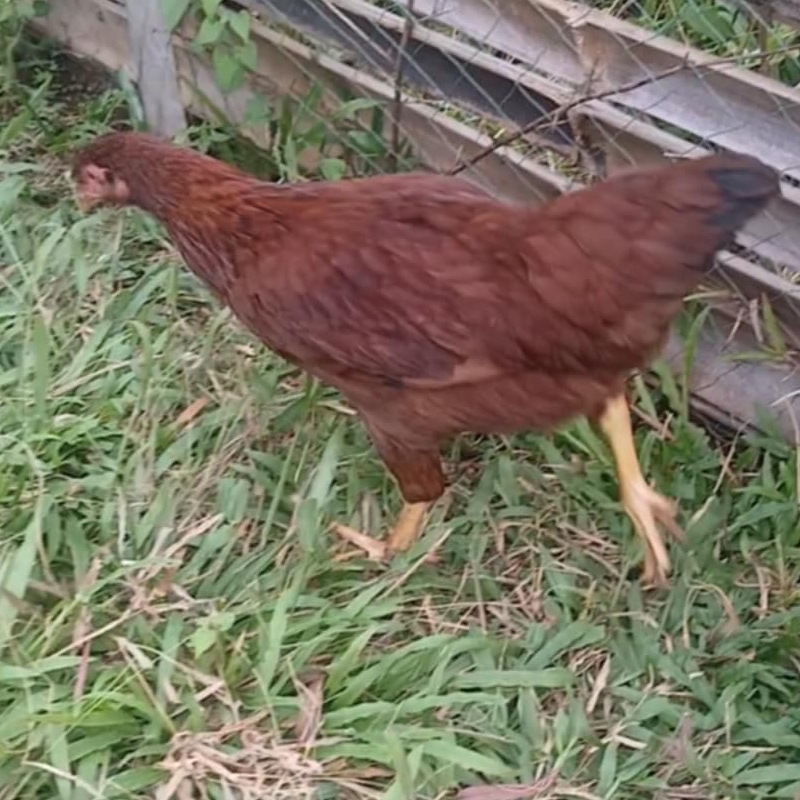
Native Chickens
The birds were domesticated around 4000 years ago, when four species of jungle fowl were selectively-bred over time. Of these, the Red Jungle Fowl (Gallus gallus) became the forerunner of the Domestic Chicken (Gallus domesticus), which has now split into some 350 recognized breeds.
The native Bolinao Breed
Hailing from Pangasinan, a coastal region north of Manila, this breed shows fine potential either as broiler or layer stock. The eggs are smaller but plenty still. Plumage color varies widely, but reds and browns are the norm, with the occasional jet-black bird cropping up. The somewhat drab plumage is paired with a red comb, earlobes and hackles. Excellent free-range fowl, they require minimal inputs.
This is San Francisca, our mixed native Bolinao Hen, she survived a dog attack and must have a Saint protecting her, Saint Francisco.
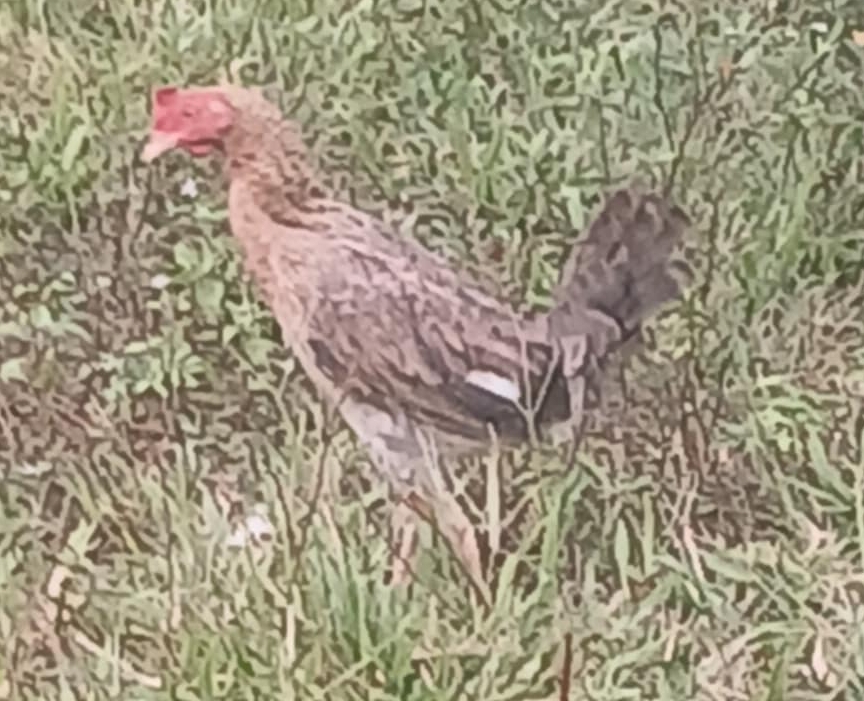
The major Breeds are
- Banaba
- Bolinao
- Joloano
- Paraoakan
- Darag
Brooder for Turkeys: Essential Considerations
Brooding turkeys requires careful attention to ensure the health and well-being of the poults. A brooder serves as a controlled environment where young turkeys can thrive during their initial weeks of life. The following key aspects should be considered when setting up a brooder for turkeys:
- Environment: The brooder must provide warmth, dryness, and protection from drafts
- Brooder Box: Any suitable container can function as a brooder, provided it includes:
- Security to prevent escape or predation
- A screen cover to allow ventilation while keeping the poults safe
- Temperature Management: It is crucial to monitor the temperature within the brooder. Initially, temperatures should be around 95°F (35°C), decreasing by 5°F (3°C) each week until reaching ambient temperature.
Our Small Brooder with view window for our doggies.

